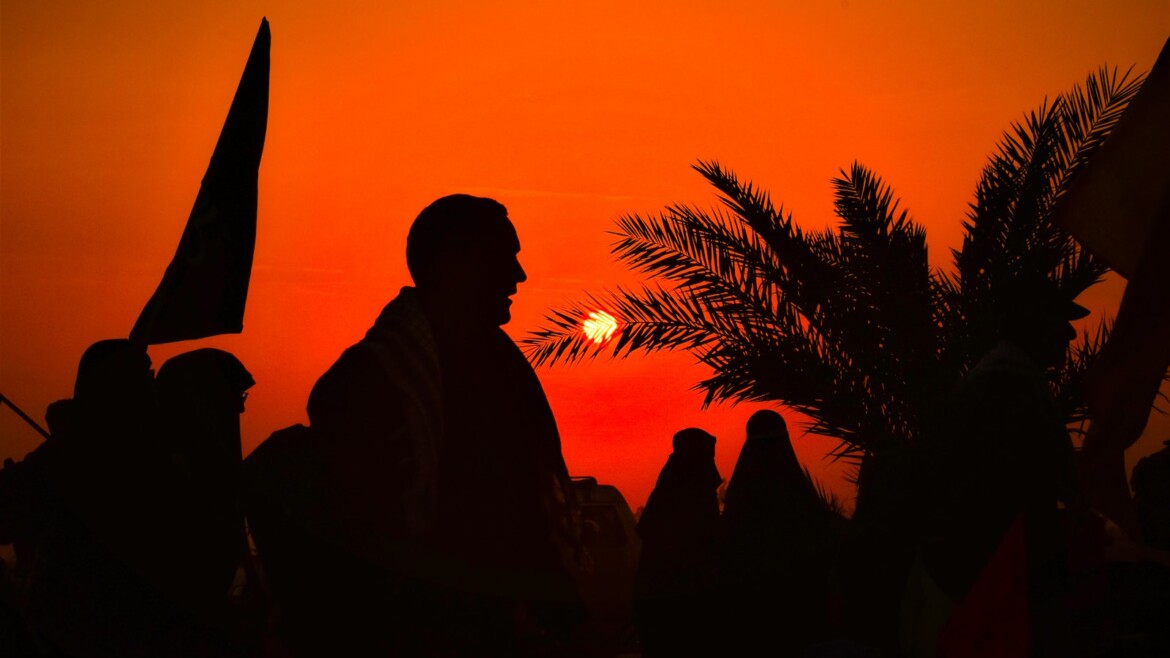The plight of the captives of Karbala during their forced march to Damascus is a heart-wrenching chapter in Islamic history, particularly within Shia tradition. After the tragic events of the Battle of Karbala in 680 CE, where Husayn ibn Ali, the grandson of the Prophet Muhammad, and his followers were brutally martyred, the surviving women and children were taken captive by the forces of Yazid ibn Muawiya.
Historical Context
The Battle of Karbala occurred on the 10th of Muharram in the year 680 CE. Husayn ibn Ali, along with his family and supporters, faced the army of Yazid ibn Muawiya. Outnumbered and surrounded, they were massacred after a day of brutal fighting. The aftermath saw the surviving members of Husayn’s family, primarily women and children, captured and subjected to a humiliating and arduous journey.
The Plight of the Captives
Forced March
- Distance and Conditions: The journey from Karbala (in modern-day Iraq) to Damascus (in modern-day Syria) covered several hundred kilometers. The captives were forced to walk much of this distance under harsh conditions, often in chains.
- Physical Hardships: The captives, including women, children, and the elderly, endured extreme physical hardships. They were given minimal food and water and suffered from exhaustion and exposure to the elements.
Humiliation and Suffering
- Public Display: The captives were paraded through various towns and cities along the route. This public display was intended to humiliate them and to demonstrate the power and authority of Yazid’s regime.
- Emotional Trauma: The psychological torment of losing their loved ones in such a brutal manner, combined with the humiliation and physical suffering, left deep emotional scars.
Key Figures Among the Captives
Zainab bint Ali
- Role and Resilience: Zainab, the sister of Husayn, emerged as a central figure among the captives. Despite her own immense grief, she provided strength and leadership to the other captives.
- Speeches and Defiance: In the courts of Yazid, Zainab delivered powerful speeches that condemned the atrocities committed and upheld the honor and legacy of her brother Husayn.
Imam Ali Zayn al-Abidin
- Survival and Legacy: Husayn’s son, Ali Zayn al-Abidin, was one of the few male survivors. He was severely ill at the time of the battle and thus spared from the fighting. Despite his illness, he endured the journey and later played a crucial role in preserving and propagating the memory of Karbala.
Historical and Religious Significance
- Symbol of Resistance: The plight of the captives of Karbala is seen as a symbol of resistance against oppression and tyranny. Their endurance and steadfastness in the face of immense suffering are remembered and honored, particularly during the annual commemorations of Ashura and Arbaeen.
- Spiritual Legacy: The journey of the captives is not just a tale of suffering but also of spiritual resilience and faith. Their story has inspired countless generations to uphold principles of justice, dignity, and perseverance.
Commemorations and Remembrance
- Ashura: The 10th of Muharram, marking the day of the Battle of Karbala, is observed by millions of Muslims, particularly Shia, as a day of mourning and reflection on the sacrifices made by Husayn and his followers.
- Arbaeen: The 40th day after Ashura, known as Arbaeen, commemorates the end of the mourning period and is one of the largest annual gatherings in the world, with millions of pilgrims traveling to Karbala.
The journey of the captives of Karbala from Iraq to Syria remains a poignant reminder of the human cost of tyranny and the enduring power of faith and resilience. Their story continues to resonate deeply within the hearts of millions, serving as a powerful testament to the values of justice and steadfastness in the face of adversity.

